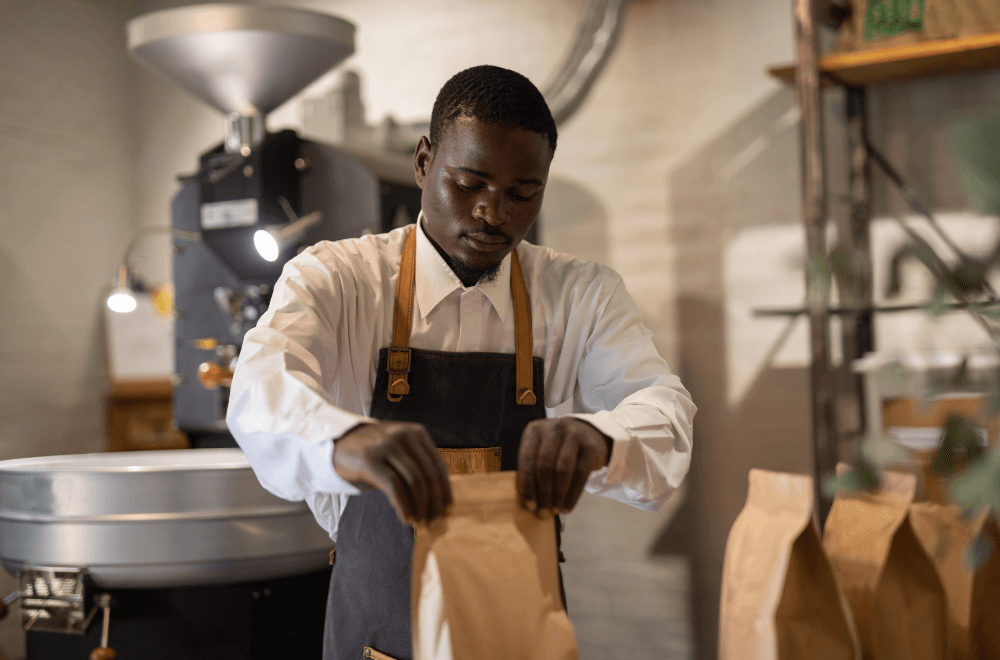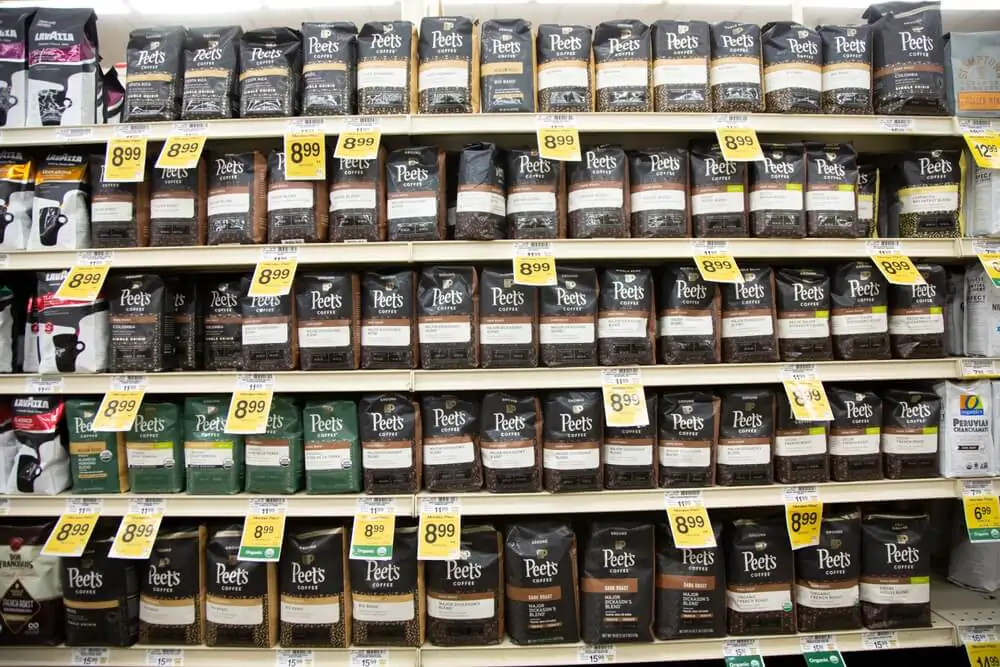This article will answer your question about “where is Peet’s coffee grown?” with a lowdown into its major suppliers as well as their sustainable partnerships.

Peet’s Coffee and Tea is a genuine icon in the US coffee industry thanks to its excellent commitment to delivering original craft coffee. To become a stronghold in the industry, Peet’s Coffee has a sourcing team to study and vet the beans from more than 59,000 small coffee farms across 24 regions around the world, so where is Peet’s coffee grown?
With so many blends, Peet’s sources coffee from thousands of farms and locations. Much of their coffee is sourced from Costa Rica, Guatemala, and Nicaragua. The brand’s strict commitment has allowed it to stay aligned with its responsible sourcing achievement before roasting them in small batches at its roastery based out of Almeda, California.
Peet’s Coffee At A Glance
The story of Peet’s Coffee started long before Alfred Peet opened his first location in 1966 in Berkeley, California, just a few blocks from the University of California.
Alfred Peet was born in 1920 and nourished by a family with a rich tradition of trading coffee and tea back in Alkmaar, Holland. Deciding to skip college, Peet set sail to Indonesia, where he discovered new coffee varietals and roasting methods. In his 30s, he arrived on the West Coast of the United States, which is where Peet’s Coffee was born.
Unhappy with the quality of American coffee, Peet started his own coffee and tea business using the knowledge he gained during his travels as well as the traditional craft he learned from his family. Peet’s freshly roasted coffee was a big hit, as in those days, coffee was mostly served in restaurants and was low-quality and watered-down.
Today, all of Peet’s coffees are made from pure Arabica beans, which are regarded as higher quality than Robusta. Arabica coffee must be grown at high altitudes, receive steady rainfall, and have quality, nutrient-rich soil. The brand curates an optimal process as well as an elite team to vet the beans to produce the highest quality coffee.
A Devotion To LEED Gold Certification
Peet’s Coffee has achieved and maintained the LEED Gold status since 2008, making it the first artisan coffee roastery in the United States to achieve such a notable award. You might be wondering why is Peet’s Coffee so expensive.

To attain this prestigious certification, the brand had to meet requirements in five different areas. These include site development, water savings, energy efficiency, materials selection, and indoor environmental quality.
To preserve the excellent flavor for customers, Peet’s adheres to the roast-to-order production process. This means when you receive the coffee, you will see the roast date imprinted on the package. The roasters expect to have their coffee sold within the 90-day window for groceries and less than that for online orders.
Peet’s Farmer’s Assistance Program Ensures Sustainable Partnerships
Peet’s participates in direct trade with coffee growers to maintain the transparency and quality of the coffee they take to the roastery. Such a close relationship with native growers around the world allows Peet’s to improve the working conditions of generations of people.
Other than that, it also encourages the brand to prioritize coffees that have received USDA Organic, Fair Trade, and Rainforest Alliance certifications. During the brand’s journey to sustainability, Peet’s Coffee has created a Farmer Assistance Program.
The idea behind this program is to look for smallholder farmers and business families with great potential to produce high-quality coffee beans aligned with the set of standards Peet’s has developed. If they have the potential but are not quite there yet, the brand, along with some other partnered programs, will find a way to assist.
Many suppliers across 24 regions are socially and environmentally progressive. One of the best representatives is Finca Don Bosco. This family-owned farm is nestled along the border between Panama and Costa Rica, with a proximity to the lush La Amistad Biosphere Reserve.
Finca Don Bosco dedicates one-third of the land they’ve owned for three generations only for coffee planting. The rest is saved for the first-growth rainforest. By going Peet’s way, the Finca Don Bosco family supplies their entire crop to the brand each year at an exceptionally high price per pound, even when the harvest’s success is not at its peak.
One of the best-sellers, Peet’s Major Dickason’s Blend, introduces excellent quality coffee from Coope Dota. This is a small-farmer cooperative in Costa Rica with a well-established relationship with the brand for more than two decades.
Coffee from Coope Dota envelops a signature profile that Peet’s has been known for years: a complex flavor from a dark roast profile that’s unbeatably satisfying. This is one of my favorite calls from Peet’s for a beautiful shot of espresso.
On the lesser-known side, Peet’s Coffee also offers Las Hermanas Coffee. It’s brought to you by a 100% women-produced farm with Fair-Trade certification that embodies the company’s sustainable partnerships and direct impact on the local women’s cooperative, Las Hermanas.
The woman-owned community was started by Fatima Ismael in 1999. Today, Las Hermanas is home to 200 female growers in the highlands of Jinotega, Nicaragua.
These women have introduced the idea of sustainable coffee through challenges in improving their traditional cultivation practices, uncompromising commitment, and continual ability. Today, their partnership with Peet’s introduces medium roast coffee with a beautiful hint of milk chocolate sweetness and a satisfying, creamy texture.
Peet’s Coffee And Its Unrivaled Reputation In Today’s Market

Today in the US, Peet’s Coffee is known as a stronghold coffee retailer rather than a coffee bar with a strong obsession and expanding locations. Instead of digging their noses into fixed-price contracts renting out brick-and-mortar stores in the liveliest neighborhoods across the US, Peet’s Coffee concentrates on developing its premium coffee quality and care for society.
This is also one of the biggest contrasts between Peet’s and Starbucks. Even though the two coffee titans have shared many common grounds, Peet’s Coffee decided to stick to its motherhood location with a few stores outside California. Meanwhile, Starbucks focuses on a massive expansion throughout the world to increase its brand awareness.
The way Peet’s Coffee keeps its optimal number of locations in control is quite a surprise, given the fact that it has millions of dollars in annual revenue. Today, Peet’s Coffee has about 200 coffee shops. You can also take their coffee home, as it can be found in approximately 15,000 warehouse clubs, grocery, and convenience stores across the US.
Other than buying coffee directly on their website or visiting one of the partnered stores, you can also buy Peet’s coffee on popular e-commerce pages such as Amazon, Walmart, and eBay. Each channel offers somewhere between 25 to 30 active blends in multiple package sizes and flavors.
Learn more in our guides on which Peet’s Coffee is the strongest and which Peet’s Coffee is the best.

